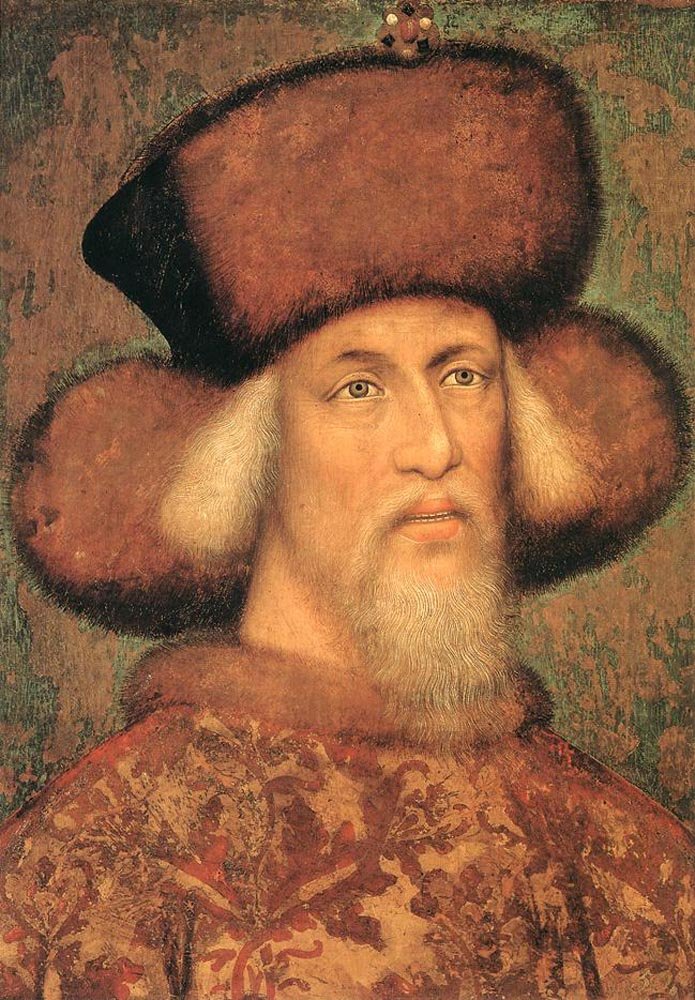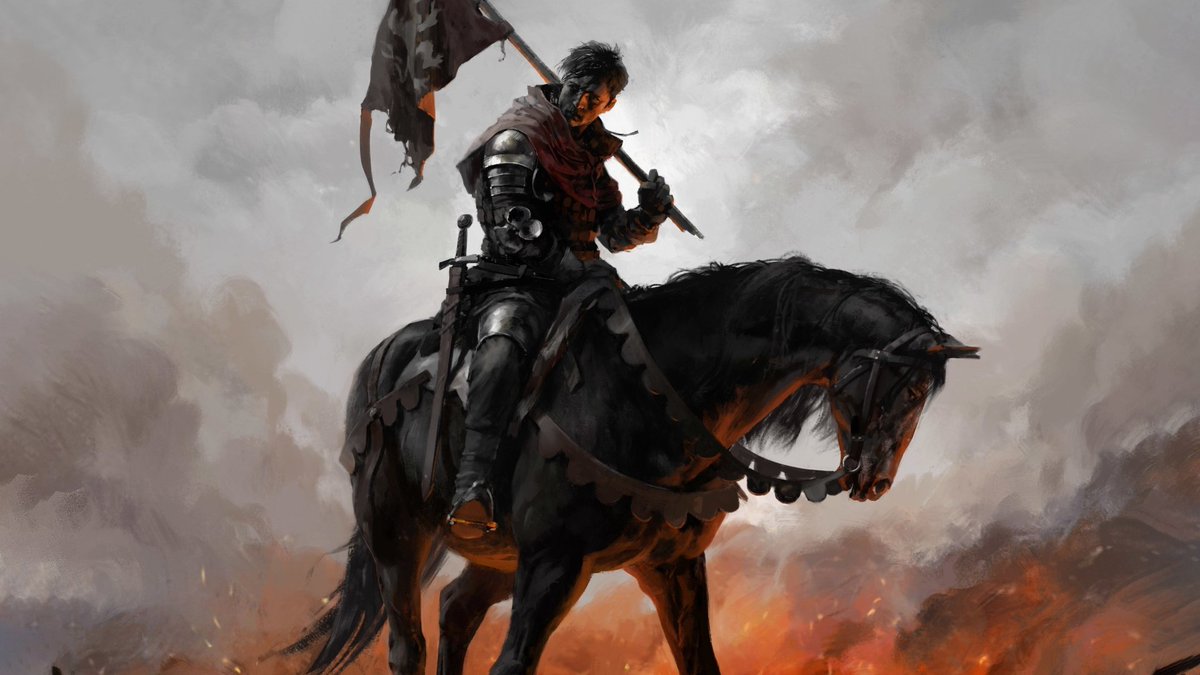Part 2 of my thread of the history behind Kingdom Come Deliverance! Here we will cover Sigismunds invasion of Bohemia, and the subsequent Hussite Wars that plagued his rule afterwards.
Let's jump back in
Let's jump back in

In 1403, the year the game begins, Sigismund has Wenceslas of Bohemia in his custody since 1402.
On the 20th of November 1402, Wenceslaus was forced to sign his renunciation of all his powers to Sigismund and the Dukes of Austria.
On the 20th of November 1402, Wenceslaus was forced to sign his renunciation of all his powers to Sigismund and the Dukes of Austria.

In 1403, Sigismund would invade the lands of Bohemia with his Hungarian forces. Sigismund and his forces would loot the towns in their path, impose heavy taxes on the populace and persecuted supporters of Wenceslas. 

Jobst and Sigismund would reach an agreement to an armistice that would go from the 14th of April to the 20th of May. Eventually by the end of the armistice, Sigismund would retreat from Bohemia. 

Wenceslas would die in 1419, and Sigismund would be his successor. Sigismund would immediately have to deal with the Hussite Wars to come. 

The Hussite Wars were a crucial period in the history of Bohemia that would mark the beginning of a series of conflicts between the followers of Jan Hus, a religious reformer, and the Catholic Church. 

On July 30, 1419, tensions between the Hussites and the Catholics reached a boiling point. A large crowd of Hussite protestors gathered in Prague to demand religious reform. As the situation escalated, the crowd stormed the New Town Hall. 

During the altercation, two Catholic councilors and the city judge were thrown out of the window. This event, known as the First Defenestration of Prague, was a catalyst for the Hussite Wars, as it marked the beginning of open hostilities between the Hussites and the Catholics. 

Following the First Defenestration, the Hussites openly defied the Catholic authorities, and the conflict quickly spread beyond Prague. Various segments of society, including the lower classes and some nobles would begin to support their cause. 

In response to the Hussite uprising, the Catholic Church and the Holy Roman Empire launched several crusades to suppress the Hussites and eliminate their religious movement. 

During the Hussite Wars, the Hussites developed innovative military tactics that allowed them to achieve significant military successes against the larger and better-equipped Catholic forces. They utilized large war wagons, known as "tabor." 

It should be noted that in the game there is a distinct lack of crossbows, firearms and cannons, which were very prominent in the Hussite conflict. 

The Hussite Wars continued in subsequent years, with various phases and negotiations. Over time, the conflict evolved, and different Hussite factions emerged, leading to internal divisions among the Hussites themselves. 

Notably, there were the more radical Taborites and the more moderate Utraquists. The Taborites sought radical religious and social reforms, while the Utraquists were focused on obtaining religious concessions from the Catholic Church. 

In 1420, the Hussites presented a set of demands known as the Four Articles of Prague to the Catholic authorities. 

These articles include the right for the Czech laity to receive communion in both bread and wine, the preaching of the Gospel freely, the exclusion of unworthy clergy, and the punishment of mortal sins. This formed the basis for negotiations between the Hussites and the Catholics 

After years of conflict and negotiation, a series of agreements known as the Compacts of Basel were signed between 1433 and 1434. These compacts recognized the Hussites' right to practice their religious beliefs in Bohemia. 

Many significant battles occurred during the Hussite Wars and implore you to read about all of them, however today I would like to talk about the Battle of Sudoměř. 

The Battle of Sudoměř took place on March 25th 1420, between the Hussite forces and the Catholic forces in Southern Bohemia. The Hussites were outnumbered 2-1, initially attempting to surrender, the Catholic forces rejected it, and the fighting really started. 

Facing a fighting force comprised of armored knights, the Hussites had surrounded their flanks with war wagons that were previously mentioned. The strength of the forces were about 700 for the Catholics, and 400 infantry for the Hussites. 

The Hussites would inflict heavy casualties while also suffering heavy casualties on their side, including their leader Břeněk of Švihov, but eventually became victorious in the battle. 

The Hussite Wars had a lasting impact on Bohemia and the broader Holy Roman Empire. While the Hussites achieved religious and political concessions through the Compacts of Basel, their unity waned over time, and internal divisions persisted. 

The wars also significantly influenced the development of military tactics and equipment in Europe, with the use of war wagons becoming a notable feature in later conflicts. 

These wars would plague much of Sigismund's rule, which would delay Sigismund's coronation.
In 1431 Sigismund returned to Italy, where he received the Lombard crown. He was crowned emperor two years later and was finally received in Prague as king of Bohemia in 1436.
In 1431 Sigismund returned to Italy, where he received the Lombard crown. He was crowned emperor two years later and was finally received in Prague as king of Bohemia in 1436.

Kingdom Come is an amazing game, with a rich story that leads even beyond the initial Bohemian invasion. I hoped to tell that today and I hope you enjoyed. 

• • •
Missing some Tweet in this thread? You can try to
force a refresh

























